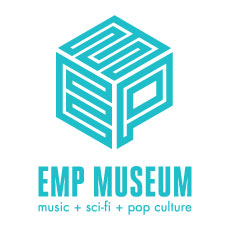People normally visit museums as leisure activities where they engage in informal learning (Falk & Storksdieck, 2007). Falk & Storksdieck (2007) distinguish between compulsory learning and free-choice learning, noting the majority of people visiting a museum are engaged in the latter. However, museums are able to present information electronically, like time lapses and zooming in or zooming out, which is not possible otherwise (His, 2008). Hsi (2008) acknowledges most visitors to museums are free-choice learners, but students are often compulsory learners in museums. Technology has great promise to enhance and expand on the traditional museum experience to enhance informal learning (Hsi, 2008).
The Exploratorium, a museum in San Francisco, has an electronic extension in an effort to maximize its educational coverage of science. The Exploratorium’s web site contains many content rich areas in which students can explore many topics. As well as content, the web site contains many demonstrations and instructions for hands-on activities, which would allow students to work together to develop knowledge.
I found The Exploratorium to be rather content heavy and rather non-interactive. There is much rich content, but it is presented in much the same manner as many museum exhibits: factual and information rich. There is a little interaction for students, but this mainly consists of choosing an area to read about, view a video or view images. Some images or pages display information dependent upon the location of the mouse. I saw little to aid student’s collaboration; if using this resource the teacher would have to provide another avenue for collaboration.
The Exploratorium, differing from WISE, does not have planned sequences of lessons forming units of study. Wise contains ways and means for educators to create or customize units, whereas I noticed no method for a teacher to create or even access a unit of study in The Exploratorium. Wise and The Exploratorium are similar in that neither has built the ability for students to collaborate over space and time. The affordance of the technology in The Exploratorium is in expanding on the traditional static museum display in order to meet a particular content presentation goal. The affordance of the technology in WISE is in creating a sequence of activities to meet a particular educational goal.
The Exploratorium has potential to become a great educational resource. Right now I feel it is just a good content area resource. In needs to be more interactive, it needs more on-line activities, it needs a collaborative aspect, and it needs a way for students to access content area experts. Milne (2007) wrote we are moving into the interaction age, where students interact with content and with each other. Students can create their own content easier than ever before, and resources such as The Exploratorium need to consider making available resources for students to make use of when creating their own content.
Right now, if I were to include The Exploratorium in my science classes, I would be more inclined to offer it as a possible content area for students to visit in pursuit of their learning goals.
Interestingly enough, as I write this I am returning from escorting students to Seattle, (which partially explains the drop in quality of this post) where one stop was at EMP, Seattle’s museum of Rock and Roll and Science Fiction. EMP is heavily technologically enhanced, with many interactive displays and many opportunities for visitors to be creative. One of the highlights for the students was to participate in a rock band experience complete with bright lights and roaring crowds. EMP definitely has made use of the affordances of technology for the in-person experience!
Falk, J. & Storksdieck, M. (2010). Science learning in a leisure setting. Journal of Research in Science Teaching, 47(2), 194-212.
His, S. (2008). Information technologies for informal learning in museums and out-of-school settings. In J. Voogt, G. Knezek (eds.) International Handbook of Information Technology in Primary and Secondary Education, 20(9), 891-899. Springer
Milne, A. (2007). Entering the interaction age today. Educause, 42(1), 12-31.

